Comparing Performance
As usual, we intend to compare the
mainboards speeds in two different modes: in nominal mode and during CPU and
memory overclocking. The first mode is interesting because it shows how the
board works with it's default settings. It is a known fact that most users
don't tweak their system, they simply choose the optimal BIOS settings and do
nothing else. That's why we run all tests with virtually no interference in any
way with the mainboard's default settings. For comparison, we also included the
results of the following mainboards: ASRock Z77 Extreme11, Asus P8Z77-V LK and Gigabyte GA-Z77-D3H.
The results on diagram have been arranged in descending order and the figures
for Asus P8Z77-V LK are marked with a darker color for your convenience.
Nominal
mode
We used Cinebench 11.5. All test runs five
times and the average result of the five runs was taken for the performance
charts.
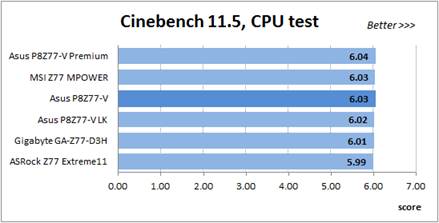
Cinebench 11.5 benchmark
We have used Fritz Chess Benchmark utility
for a long time and it proved to be very illustrative. It creates repetitive
results, the performance in it is scales perfectly depending on the number of
involved computational threads.

Fritz Chess Benchmark utility
x264 FHD Benchmark v1.0.1 (64bit) allows
comparing the system performance with the existing results in the database. The
average of five consecutive trials are shown on the diagram below:

x264 FHD Benchmark utility
We measure the performance of Adobe
Photoshop CS6 using our own benchmark made from Retouch Artists Photoshop Speed
Test that has been creatively modified. It includes typical editing of four
24-megapixel images from a digital photo camera.

Adobe Photoshop CS6 benchmark
In the archiving test, a 1 GB file is
compressed by LZMA2 algorithm, while the other compression settings remain at
default.
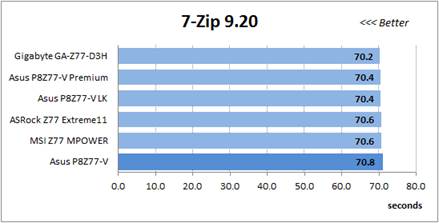
7-Zip 9.20 test
Like the archiving test, the faster 16
million of Pi digits are calculated, the better. This is the only benchmark
that the number of cores doesn't really matter, because it creates a
single-threaded load.
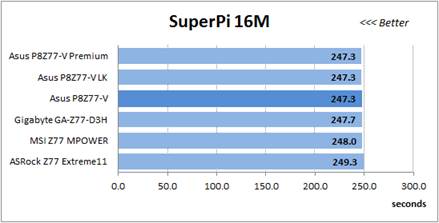
SuperPi 8M test
The next diagram shows the test results in
3DMark11 CPU - Physics Score. This score was observed in a particular
experiment simulating the physical behavior of a complex game system works with
multiple objects:
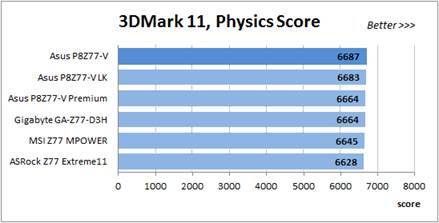
3Dmark 11 benchmark
The benchmark integrated into the Hitman
Absolution game turned out very convenient. It can be launched directly from
the game, from the game launcher utility and even from the command prompt. To
obtain the minimum acceptable results, we had to use the lowest image settings
and use one of the lower resolutions.

Hitman Absolution test
Batman: Arkham City game reacts strongly to
any change in CPU clock frequency, too, but it uses DirectX 11. We ran game’s
integrated benchmark five times with high quality images and then take the
average of five times for the diagrams.
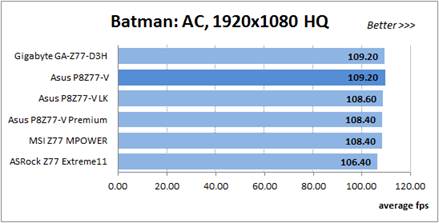
Batman test
The P8Z77-V configuration may be the
slowest (as in 7-Zip 9.20) or fastest (3DMark, 11 Physics Score) among the
tested platforms, but the difference is small in any case because the similar
mainboards can likely provide the same performance in identical conditions.
Overclocking
mode
To carry out the overclocking process, we
checked out all the motherboard at the same settings for the sake of comparison
purposes. That is why we chose the CPU clock speed of 4.5 GHz. However, the
ASRock Z77 Extreme11, the ASUS P8Z77-V and the Gigabyte GA-Z77-D3H can
actually overclock the CPU to 4.6 GHz, so they will have a slight advantage in
practice.

Cinebench 11.5 benchmark
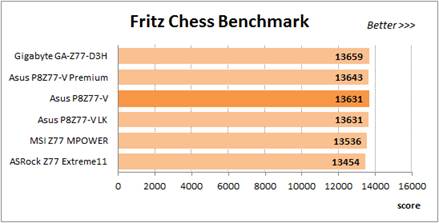
Fritz Chess Benchmark utility
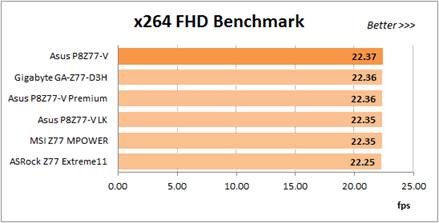
x264 FHD Benchmark utility
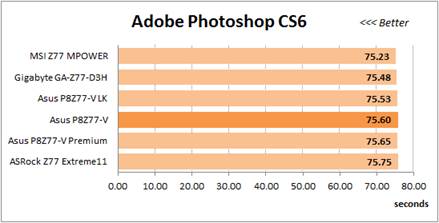
Adobe Photoshop CS6 benchmark
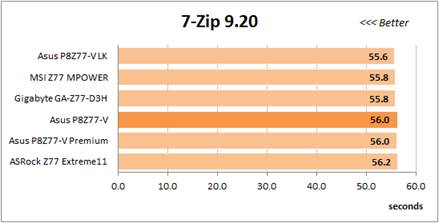
7-Zip 9.20 test
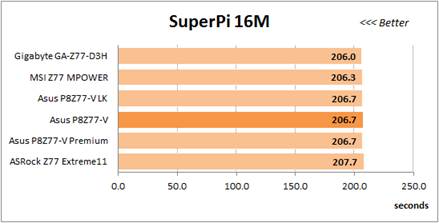
SuperPi 8M test

3Dmark 11 benchmark

Hitman Absolution test

Batman test
The overall picture remains the same. The
ASUS P8Z77-V is still comparable with other ASUS mainboards and there is not
much different with the products from other manufacturers.